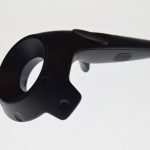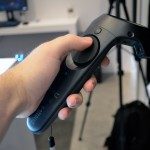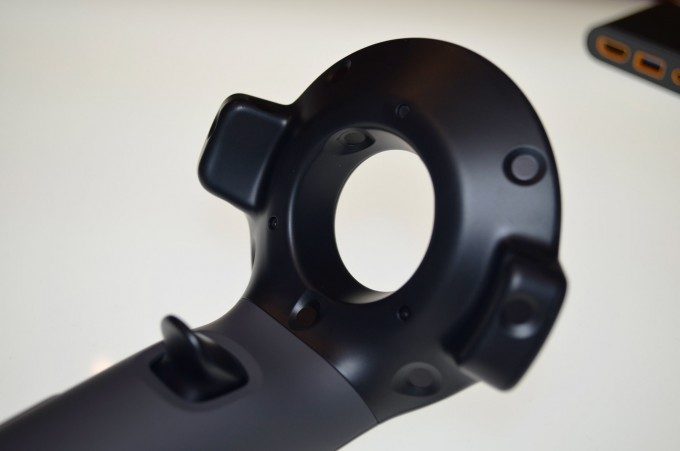Ergonomics
This was one of the areas where the Vive was sorely lacking compared to the Oculus Rift and PlayStation VR. While the Vive experience itself was great out of the gate, the headset was bulky and heavy. The Rift CV1 felt to beat it on weight while PlayStation VR had the upper hand on comfort.

This has been addressed in a major way. The Vive Pre not only looks sleeker, but it’s also seen a huge reduction in size. We don’t have hard numbers on weight (though we’re heard reports that the Pre is actually heavier than the original Vive), but it is noticeably more comfortable thanks to the headset resting much closer to your face, and to an improved head-strap which has better weight distribution and a wider gripping area.
The Vive Pre controllers see even a more significant visual change from the controllers of the older Vive dev kit, and feel much closer to consumer hardware, though a bit plasticky compared to Oculus’ Touch. While still fairly large, the new design pulls the center of gravity in toward the user’s hands a bit more.
The ‘grip’ buttons on the sides of the controllers are now in a much better position, but still seem a bit tough to grab if being used in conjunction with the trackpad. The trigger is now two-stage, which gives it a normal pull as usual with a button-like click when you pull it all the way.
Rechargeable batteries are now built directly into each controller, charging over MicroUSB, and HTC says they’ll last for around 4 hours. The company also says the haptic engine in the Vive Pre has been improved, though I didn’t have enough time with haptic experiences to get a sense for how much.
HTC and Valve have committed to making 7,000 of the Vive Pre development kits available prior to launching the consumer Vive in April, though they aren’t saying if these units will be distributed through a closed process or become openly available for developers to buy.
While there’s likely to still be improvements made between Pre and the consumer Vive, it’s hard to gauge how significant they will be. All in all, the Vive may not have hit its ambitious Q4 2015 shipping date, but the latest improvements show that Valve and HTC are on the home-stretch to launch.









